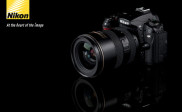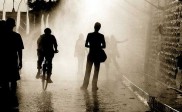Bird Photography: A Beginner’s Guide
The beautiful colors and the joyful songs of birds attract lots of people and make them want photograph these magnificent creatures. But bird photography isn’t an easy discipline, as you need to master every aspect of your camera, and you also have to learn about the birds you intend to photograph (their habits, where to find them and how to approach them). So some ornithology (the study of birds) knowledge can be of great help when delving into bird photograpy.
When photographing birds, your photographic technique will be mainly determined by their behaviors, and most of the time you will need to use really fast shutter speeds and very long lenses, as birds are easily scared and can sense your presence even if you are far away. Above all, what you will really need for bird photography is a lot of patience. This article will help you to get the necessary knowledge to begin in this photographic discipline.
Bird Photography Equipment:
Usually long telephoto lenses (400 mm and above) are used for bird photography. But, this kind of lenses is expensive and for a beginner there are alternatives.
Although it’s always better to use a DSLR and really long telephoto lenses, a beginner can achieve good results with a prosumer or bridge camera. This kind of camera’s will allow you to control the settings manually and will also provide you with a big zoom range.
When choosing the camera you are going to use for bird photography, make sure it has at least the following characteristics:
– Shutter priority and aperture priority modes
– An optical zoom of 10X or more
– Bracketing and continuous shooting modes
– The possibility to reduce the sounds produced by the camera to a minimum
– Exposure compensation
– Spot metering and focusing
– Little to no shutter lag
– The possibility of attaching different accessories, such as flashes and filters
If you already own a DSLR, you will find all of the above characteristics included in it. So, you should attach to it a lens long enough for bird photography. You can begin with a good quality 200 mm lens and one or two teleconverters.
Also, consider getting a tripod with a ball head which will allow you to follow the movements of flying birds more comfortably.
Do Your Homework:
Before heading to the nearest park or forest and starting shooting (with your camera of course), you should do some research about your subject to learn how to approach it. You can simply start by searching the web for the different species which live in your area. Learn about their habitat, the times in which they can be seen and how accustomed to human presence are they. If the information you find on the internet is not enough, ask the authorities who are responsible for the park or reserve you are going to visit. Also, don’t try to cover all the bird species at once. It’s better to concentrate on one or two species every time you go out shooting. By focusing on one or two kinds of birds, your chances of getting amazing shots of that particular species will grow bigger. After learning about your subject, you also need to learn about the setting you are going to be photographing. If it’s a huge animal reserve or just your garden, it’s really important to study the place beforehand, so that you can determine where the birds are usually found, the direction of the light at different moments of the day, and which spot is the best to take your photos from.
Hide:
Birds are very weary of human presence and will disappear the moment they feel threatened by something. This makes it very hard to take shots of birds from a close distance and that’s why the use of telephoto lenses is crucial in bird photography. There are different techniques which will allow you to photograph birds without frightening them.
Sheds and blinds are widely used and will allow you to be close to your subject without them noticing you. Many parks and animal reserves, offer to the visitors, sheds to be used by bird watchers and photographers. But, there are also portable blinds, which you can carry with you wherever you go. This last option will give you more mobility and thus more chances to capture great images.
An alternative is to use your car as a blind. Birds are accustomed to seeing and hearing cars passing by all the time and the presence of your car won’t usually affect their behavior. So, consider buying a good window mount to set your camera properly
You can also attract the birds to your spot through using food and water. This is more valid for photographing birds in your own garden where you can place feeders in different spots and you can hide behind a window in your house.
Some bird photographers choose to trigger their cameras from a distance through different devices. This usually includes placing a tripod where you want to take the photos for a few days, so that the birds get used to it, and then to come back and mount your camera on it. After that you need to step back from the camera and to trigger it through a radio system.
No matter the technique you use to approach birds, the most important quality to have, in bird photography, is patience.
Settings and Composition:
In bird photography, there are many hardships to overcome, and only practice and experience will help you to always achieve satisfying results. But there are certain things to keep in mind in order to be able to get great images even if you are a beginner.
Although most DSLRs offer, nowadays, sophisticated metering systems which will provide you with accurate exposure most of the time, they can be fooled in certain situations. In bird photography, a big part of your background is usually the sky. Taking an accurate measure of the light in such situation can be tricky. In case the sky is brighter than the bird you are photographing, you run the risk of underexposure, and in the opposite case (a sky darker than your subject) you run the risk of overexposure. To avoid such a problem, take some shots before the actual shooting to determine which setting is optimal for the light conditions you are facing, also, when metering use spot metering to get a reading of the accurate exposure for your subject, and then you can use compensation to get a balanced rendering.
As for focusing, always focus on the eyes of the bird as the viewer’s attention is usually drawn to them at first. In order to make sure you focused on the eyes of sometimes tiny birds, opt for using spot focusing, present in most cameras.
The last step before pushing the shutter release button is composition. Although it’s a matter of personal taste and choice, there are some guidelines which can help you to get beautiful compositions every time.
– The size of the subject: Birds are tiny creatures, and for them to be predominant in your composition they need to cover at least 20% of your frame. That’s where a 600mm lens comes to good use. So, when composing your shot, make sure that the bird you are photographing covers enough of the frame for it to be considered a subject.
-Off centered composition: Use the rule of thirds, to place your subject at one side of the frame which will make it stand out.
– A perfect background: The background is really important in bird photography. Look out for any unpleasant elements which may ruin your shot (electric wires, posts…). Avoid including anything which is not usually found in the nature. If you can’t get rid of a certain annoying element, try to use apertures wide enough to blur the background completely.
– Don’t forget the scenery: Sometimes you get carried away taking close-ups of the birds and you can forget the beautiful scenery around. Try to vary your shots and to take some photos of the landscape and the atmosphere around you as it can be as interesting as the birds you are after.
Here are some inspiring examples of bird photography:
Photo by Frans Persoon

Morning Mist at the Lagoon by Stuck in Customs

Pride of Madeira! by Danny Perez Photography

Portrait of a crested coua by Tambako the Jaguar
You may want to take a look at 30 Fabulous Examples of Bird Photography










magnificent creatures:) love to see more of this style . Keep it up. thanx